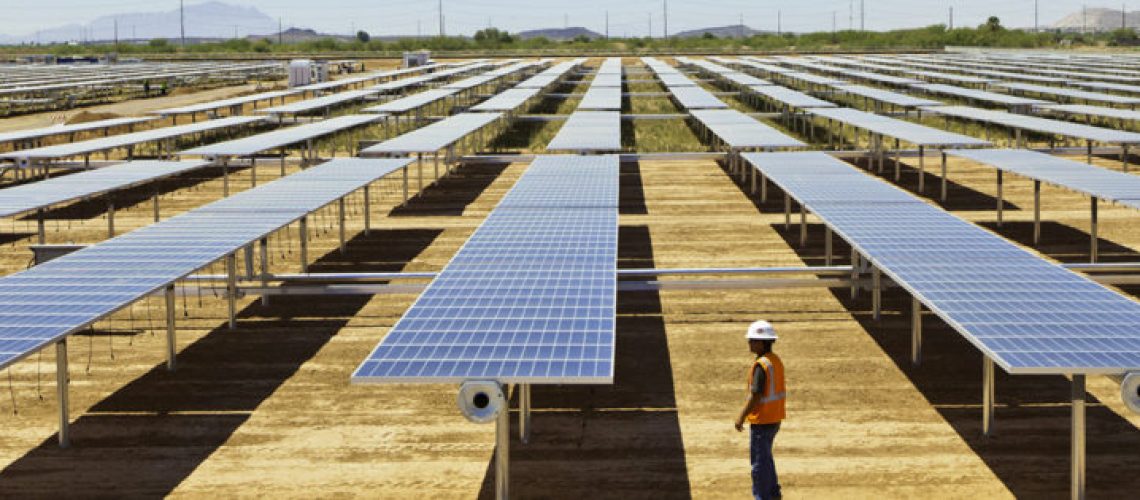Avangrid signed a $30 million order for Array Technologies trackers at the True North solar facility in Texas, which will include safe harbor inventory and newly purchased DuraTrack trackers by New Mexico-based Array.
Iberdola energy services company Avangrid will use U.S.-manufactured solar trackers for a 321 MW utility-solar project in Falls County, Texas, one of the company’s largest solar facilities under development in the U.S. to date.
Avangrid signed a $30 million order for Array Technologies trackers at the True North solar facility in Texas, which will include safe harbor inventory and newly purchased DuraTrack trackers by Array, according to the Connecticut-based energy services and utility company.
“We are very proud to announce this collaboration with Albuquerque, New Mexico-based Array Technologies,” said Pedro Azagra, chief executive officer of Avangrid. “Projects like True North are crucial to decarbonization and will help the country reach its ambitious clean energy goals and help New Mexico grow industrial green energy jobs.”
Array has been a long-standing supplier to Avangrid and Iberdrola, and the companies anticipate further supply chain growth across Avangrid’s U.S. solar portfolio.
The True North tracker procurement was vital to the final investment decision for the construction of the Texas solar facility, which is expected to be completed by the end of 2024 and situated on 1,907 acres in western Texas.
“Our durable and low maintenance trackers will help provide clean renewable energy for the Texas grid, ensuring the local community has reliable power for years to come,” said said Kevin Hostettler, chief executive officer of Array Technologies.
Solar trackers are a key component of the construction of ground-mounted solar farms used in utility-scale projects, as they allow for the movement of the panel to adjust to the exact location of the sun to optimize the absorption of solar energy throughout the day.
With the purchase of solar trackers and the development of projects like the True North solar farm, Avangrid continues to expand the development of renewable energy projects across Texas. The company currently generates more than 1.25 GW across six wind farms and manages a 1.3 GW project pipeline.
In an April 2022 permitting application submitted to the Texas Comptroller, the utility listed that it was evaluating Longi solar panels and Power Electronics inverters for use on the True North project. Baker Botts represented Avangrid in permitting of the project.
Texas is one of 24 U.S. states where Avangrid has developed solar and wind farm facilities, delivering close to 8.5 GW of renewable energy to the U.S. power grid, enough to power about 2.8 million home with clean energy.
Under Section 45X of the Inflation Reduction Act, the federal government created an Advanced Manufacturing Production Tax Credit (PTC) that can be claimed for the domestic production and sale of qualifying solar, wind and battery components, such as solar cells and tracking hardware produced on U.S. soil. The 45X PTC provides a $0.87 per kilogram credit for torque tubing components made by U.S. manufacturers and $2.28/kg for structural fasteners used on renewable energy projects, among other various PTC incentives for U.S. components.
Across each solar installation category, Wood Mackenzie has forecast 5.1 GW (dc) of solar systems will come online in Texas in 2023, of which 4.4 GW (dc) or 86% of will come from utility-scale projects, Matthew Sahd, a research analyst in Wood Mackenzie’s Energy Transition group told pv magazine USA.
Most of Texas’ new solar capacity is being built at the utility-scale, with a large band of projects occupying the drier, sunnier western half of the state. While this region benefits from cheaper land and more solar irradiance, it comes with some challenges. Delivering electricity generated in the west to the high-population centers in the east requires substantial transmission capacity. Currently, the Lone Star state is dealing with growing pains of large projects “leapfrogging” interconnection queues, leading to grid congestion, reliability issues, renewables curtailment, and high costs from “congestion rent.”



